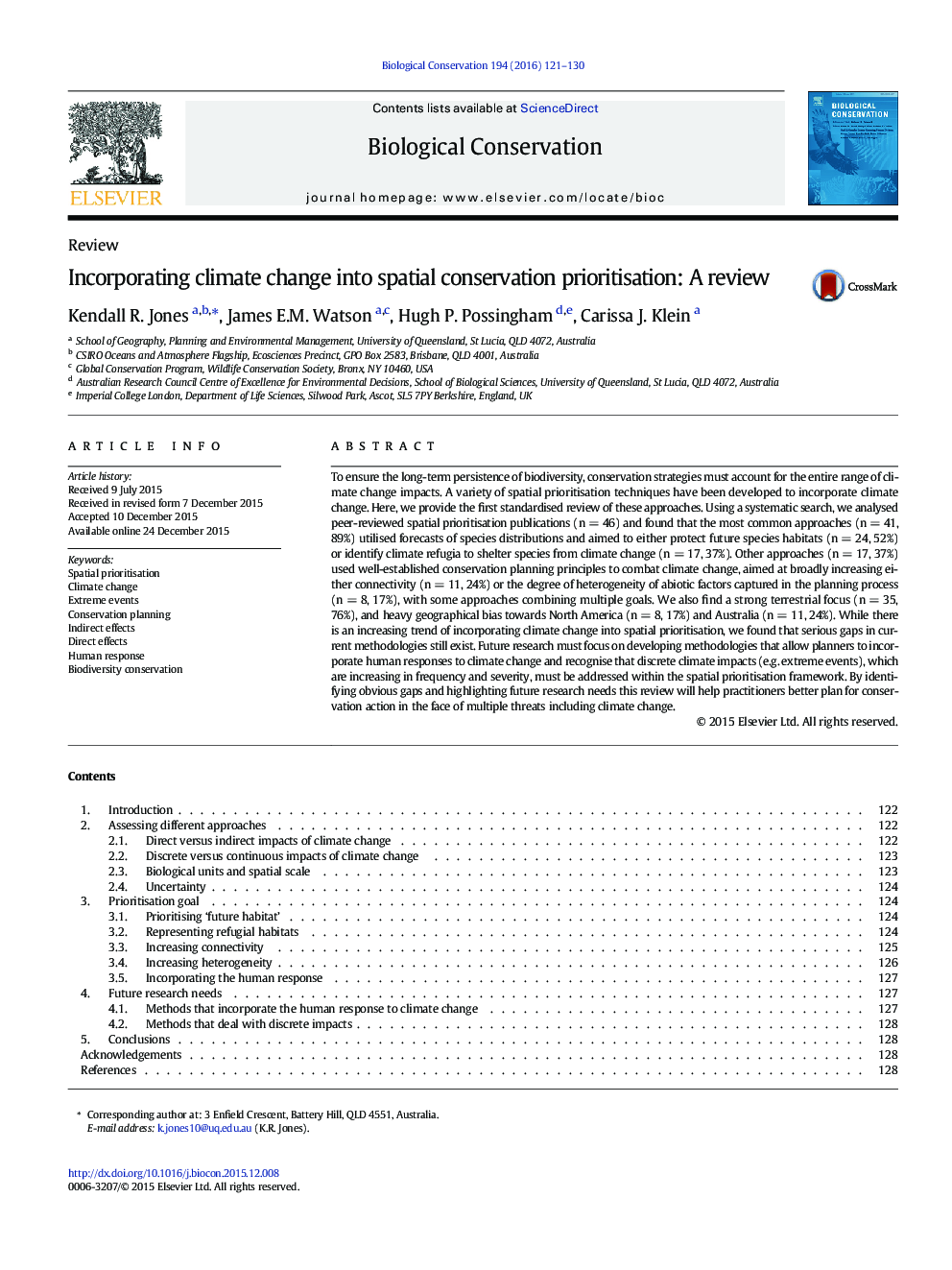| کد مقاله | کد نشریه | سال انتشار | مقاله انگلیسی | نسخه تمام متن |
|---|---|---|---|---|
| 6298771 | 1617907 | 2016 | 10 صفحه PDF | دانلود رایگان |
- We review spatial prioritisation papers incorporating climate change, finding few (46).
- We assess the impacts and timeframes considered, and their strengths and weaknesses.
- Approaches either forecast species distributions or use robust planning principles
- Human adaptation responses are almost totally ignored in spatial prioritisation.
- Discrete climate impacts (e.g. extreme events) must also be addressed.
To ensure the long-term persistence of biodiversity, conservation strategies must account for the entire range of climate change impacts. A variety of spatial prioritisation techniques have been developed to incorporate climate change. Here, we provide the first standardised review of these approaches. Using a systematic search, we analysed peer-reviewed spatial prioritisation publications (n = 46) and found that the most common approaches (n = 41, 89%) utilised forecasts of species distributions and aimed to either protect future species habitats (n = 24, 52%) or identify climate refugia to shelter species from climate change (n = 17, 37%). Other approaches (n = 17, 37%) used well-established conservation planning principles to combat climate change, aimed at broadly increasing either connectivity (n = 11, 24%) or the degree of heterogeneity of abiotic factors captured in the planning process (n = 8, 17%), with some approaches combining multiple goals. We also find a strong terrestrial focus (n = 35, 76%), and heavy geographical bias towards North America (n = 8, 17%) and Australia (n = 11, 24%). While there is an increasing trend of incorporating climate change into spatial prioritisation, we found that serious gaps in current methodologies still exist. Future research must focus on developing methodologies that allow planners to incorporate human responses to climate change and recognise that discrete climate impacts (e.g. extreme events), which are increasing in frequency and severity, must be addressed within the spatial prioritisation framework. By identifying obvious gaps and highlighting future research needs this review will help practitioners better plan for conservation action in the face of multiple threats including climate change.
Journal: Biological Conservation - Volume 194, February 2016, Pages 121-130
